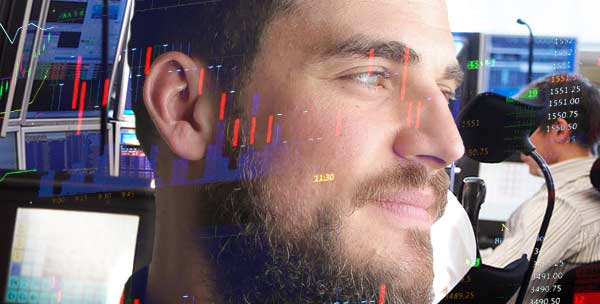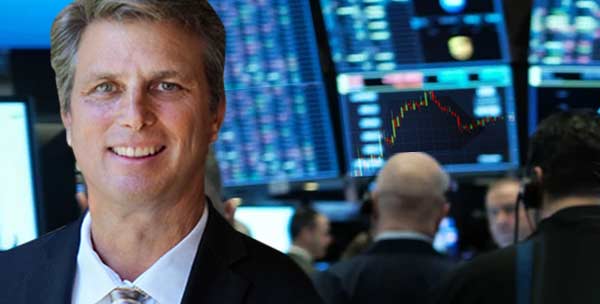Those investors who trade huge blocks of securities among themselves are referred to as institutional investors. If a large financial institution wants to buy one million shares of Apple stock, it is simpler for this institution to buy and sell financail instruments with a select few institutions rather than dealing with millions of retail investors. This is because buying shares from other institutions is done in bulk. The fourth market is comprised of significant financial institutions that trade directly with one another.

The fourth market is where financial institutions perform large scale buy or sell transactions on global financial markets. It includes both exchange-traded and OTC securities, as well as derivatives. Fourth market OTC ECN trading systems operate 24 hours a day.
The fourth market is a market in which securities are traded on a private computer trading network rather than on an established exchange by very large institutions.
The fourth market is utilized by institutions so that trading activities can remain confidential, transaction costs can be reduced, and significant volumes of business can be conducted without the need to move markets. It may be argued that the third and fourth markets are examples of secondary markets; nevertheless, due to their specialized functions, larger institutional investors are drawn to participate in these markets. They allow traders to make adjustments without having a significant impact on the market.
A subset of the capital market known as the primary market is where companies and other organizations raise money by selling debt and equity-based instruments to investors. The primary market is where a company will do its Initial Public Offering (IPO), which is when they decide to sell shares to the general public for the very first time. After the shares have been sold, they are then traded on the secondary market, where they are purchased and sold by investors.
Fourth Markets are a subset of the secondary market.
On the secondary market, investors can buy and sell securities that they already have in their possession. Even though shares of stock can also be purchased on the secondary market, this is the place that most people think of when they hear the term 'stock market.' The transactions that take place on the secondary market are distinct from the transaction that was initially responsible for the creation of the securities in question by one step.

The fourth market is only accessible to institutional investors and is used for the trading of extremely large chunks of stock. The Electronic Communications Network (ECN) is the medium via which these trades are executed. This is an Alternative Trading System (ATS), therefore there is a cost associated with each transaction. Because these deals are not required to comply with any reporting standards, it is difficult to ascertain the total number of shares that were exchanged.
The financial instruments exchange directly with a institutional counterparty on the fourth market. This market is also known as the 'derivative market.' An institution is able to enter into a contract to pay a fixed rate of interest and receive fluctuating rates of interest relevant to credit debt on its balance sheet by using a put swaption. This allows the institution to save money on interest payments.
As the fourth markets are traded between large financial institutions, transactions in the fourth markets are not open to the public as they are private financial exchanges between private corporations. As a result the visibility of the traded volume on fourth markets is not openly available to retail traders and the fourth markets do not have as many reporting requirements as secondary and third financial markets that are open to public retail traders.
The fourth market is the secondary, third, primary and third-level exchange of publicly offered shares. The primary financial markets, secondary markets, and third markets are open to all investors, unlike the fourth markets.
When firms want to avoid changing markets, they could make the decision to trade their securities behind closed doors. This could happen in the event that a pension fund and a mutual fund engage in a massive block trade together. They prevent the risk of influencing the market price or the volume of trades that take place on an exchange by carrying out the transaction across a network that facilitates electronic communication.
When firms want to avoid changing markets, they could make the decision to trade their securities behind closed doors. This scenario may play out in the event that a pension fund and a mutual fund engage in a massive block trade with one another. They are able to eliminate the potential of manipulating the market price or the volume that is traded on an exchange by carrying out the transaction through the use of an electronic communication network (ECN).
When discussing fourth markets, the term 'dark pools' is frequently brought up as a relevant concept. These markets are private exchanges that only allow transactions between institutional investors to take place. On these exchanges, transactions involving a wide variety of securities and structured products can take place, but there is little transparency for the general public market. A significant contribution to preventing other markets from having an effect on primary and secondary markets is made by the dark pools.
It is believed that about 15% of the entire volume traded in stocks takes place in dark pools. Dark pools are a form of confidential trading that takes place between institutions. They are the locations of transactions involving huge blocks of data.
Trades on the fourth market take place between institutions and frequently feature a diversified assortment of securities that are traded by a wide variety of banks. These trades take place on the market known as 'the over-the-counter market.' Block trading can benefit from the ease of use offered by dark pools in terms of facilitating large-scale transactions. Even though not all deals on the third and fourth markets take place in dark pools, using them can be beneficial for dealing with huge amounts of money.
